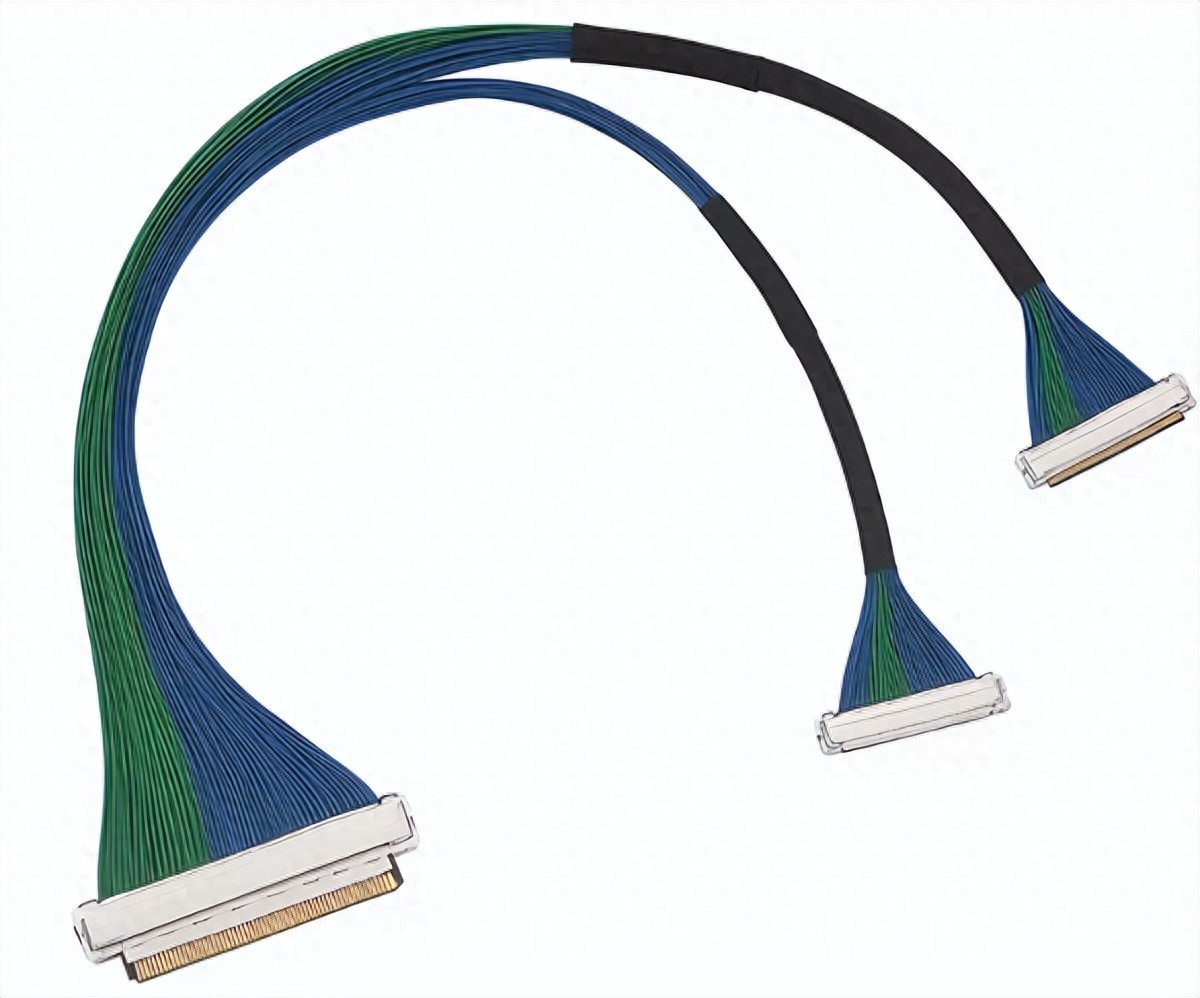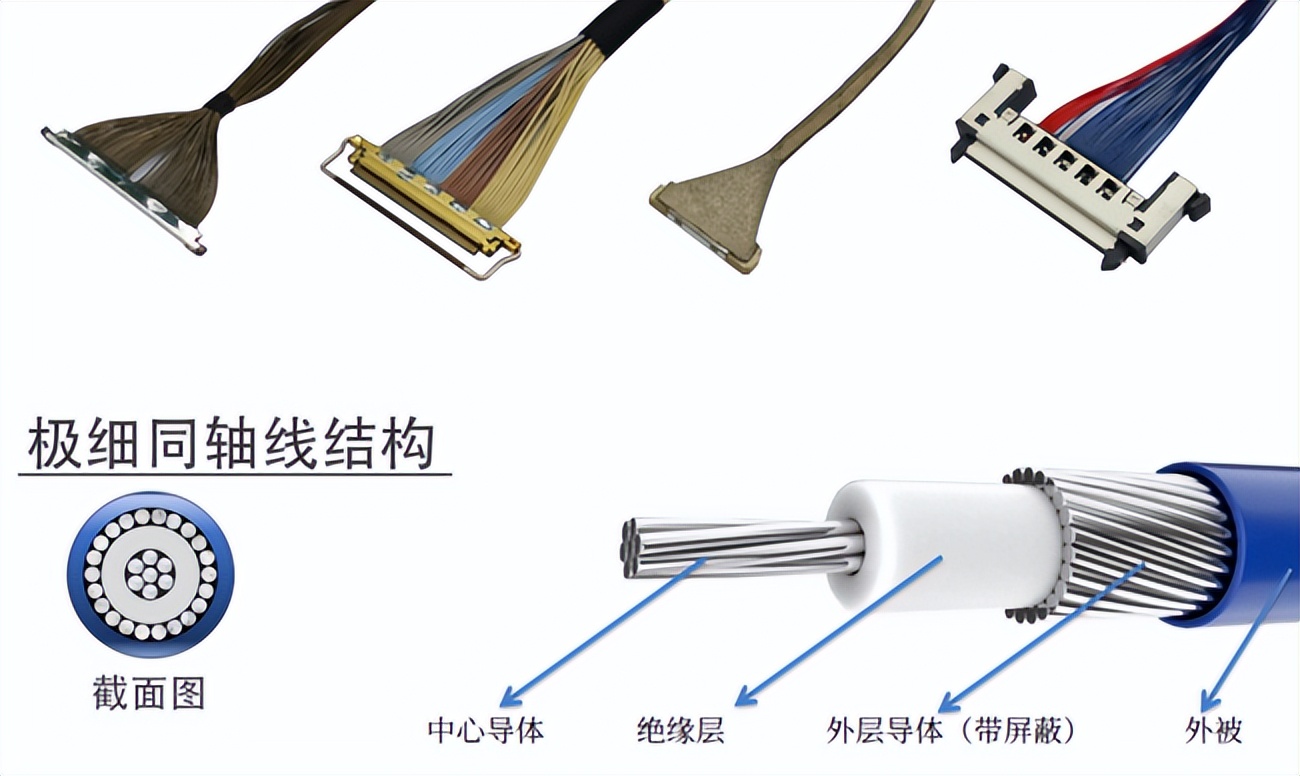Categorization:Harness Component
Under the trend of continuous pursuit of thinness and high performance in electronic devices, how to achieve high-speed and stable signal transmission within limited space has become an important challenge for design engineers. Although FPC (flexible printed circuit) is widely used, in many high-end devices, manufacturers tend to choose ultra-thin coaxial cables (micro coaxial cable). What is the reason that makes this miniature cable stand out in the field of high-speed transmission?
Background of Application
With the popularity of new electronic products such as foldable smartphones, slim laptops, and AR/VR devices, data transmission speeds are constantly increasing, with speeds above 10Gbps becoming the norm. In such high-speed environments, the industry usually adopts two internal connection schemes:
Firstly, it is FPC (Flexible Printed Circuit), which has the advantages of low cost and convenient wiring, but its anti-interference performance is limited in high-frequency environments.
The second is an extremely thin coaxial cable bundle, which is specifically designed for high-speed signal channels and is often used for connections between screen modules and motherboards. Many manufacturers ultimately chose the latter, and the fundamental reason lies in the fact that the extremely thin coaxial cable bundle performs better in terms of signal anti-interference and integrity control.
The anti-interference advantage of ultra-fine coaxial beam
Firstly, it has a full shielding structure. Each signal core wire is wrapped with an insulating layer and a metal braid layer, forming an independent shielding cavity, which is equivalent to putting a "protection armor" on each line. This design can effectively isolate external electromagnetic interference and prevent cross-interference between signals. In contrast, FPC relies solely on the surface coating film for protection and has almost no real electromagnetic shielding capability.
Secondly, the impedance control of extremely fine coaxial cable束 is more stable. In high-speed interfaces such as USB4, MIPI DSI, eDP, impedance consistency directly determines signal integrity. By precisely controlling the spacing between the conductor and the shielding layer, extremely fine coaxial cables can maintain impedance within the range of 40~50Ω, thereby reducing the risk of reflection and jitter; in contrast, FPC is greatly affected by material and process errors during the manufacturing process, resulting in significant impedance fluctuations.
Again, it adapts to dynamic bending environments. Application scenarios such as folding screen hinges, notebook hinges, VR headsets, etc., have extremely compact spaces. The diameter of the extremely fine coaxial cable束 is usually only 0.3mm~0.5mm, with excellent flexibility, and it can maintain excellent electrical performance even after multiple bends. FPC is prone to cracking or performance degradation after frequent bending.
Finally, data rate support is higher. Currently, high-end micro coaxial cables can easily support 10Gbps and even higher speeds, widely used in video and data interfaces, while FPC is prone to signal attenuation and cross talk amplification in transmission over 5Gbps. Section 3: The Value and Limitations of FPC
Section 3: The Value and Limitations of FPC
FPC still has advantages in the low-speed signal field—thin structure, low cost, and free wiring, so it is still widely used in non-high-speed scenarios such as control signals and touch lines. However, in high-frequency and high-speed environments, its electromagnetic interference resistance and signal integrity are insufficient, which is also a key reason why high-end equipment generally turns to extremely thin coaxial cable bundles.
Extremely thin coaxial cable束 is not only a "thin" type of wire material, but also a systematic solution for high-speed signal transmission. It effectively compensates for the deficiency of FPC's anti-interference capability in high-speed transmission through independent shielding, precise impedance control, and high flexibility. In the future, with the continuous growth trend of high-speed interfaces and high-frequency signal applications, extremely thin coaxial cable束 will undoubtedly continue to become the main solution for internal connections within electronic devices.
I am[Suzhou Huichengyuan Electronic], focuses on the research and development, as well as customization, of high-speed signal cables and extremely fine coaxial cables, committed to providing stable and reliable high-speed interconnection solutions. If you have any related needs or wish to learn more about product details, please feel free to contact:Manager Zhang 18913228573 (same WeChat number)。